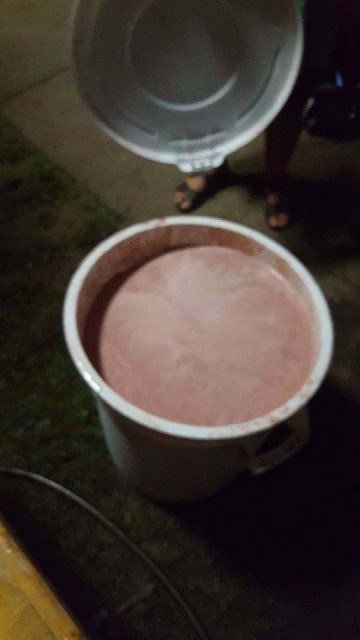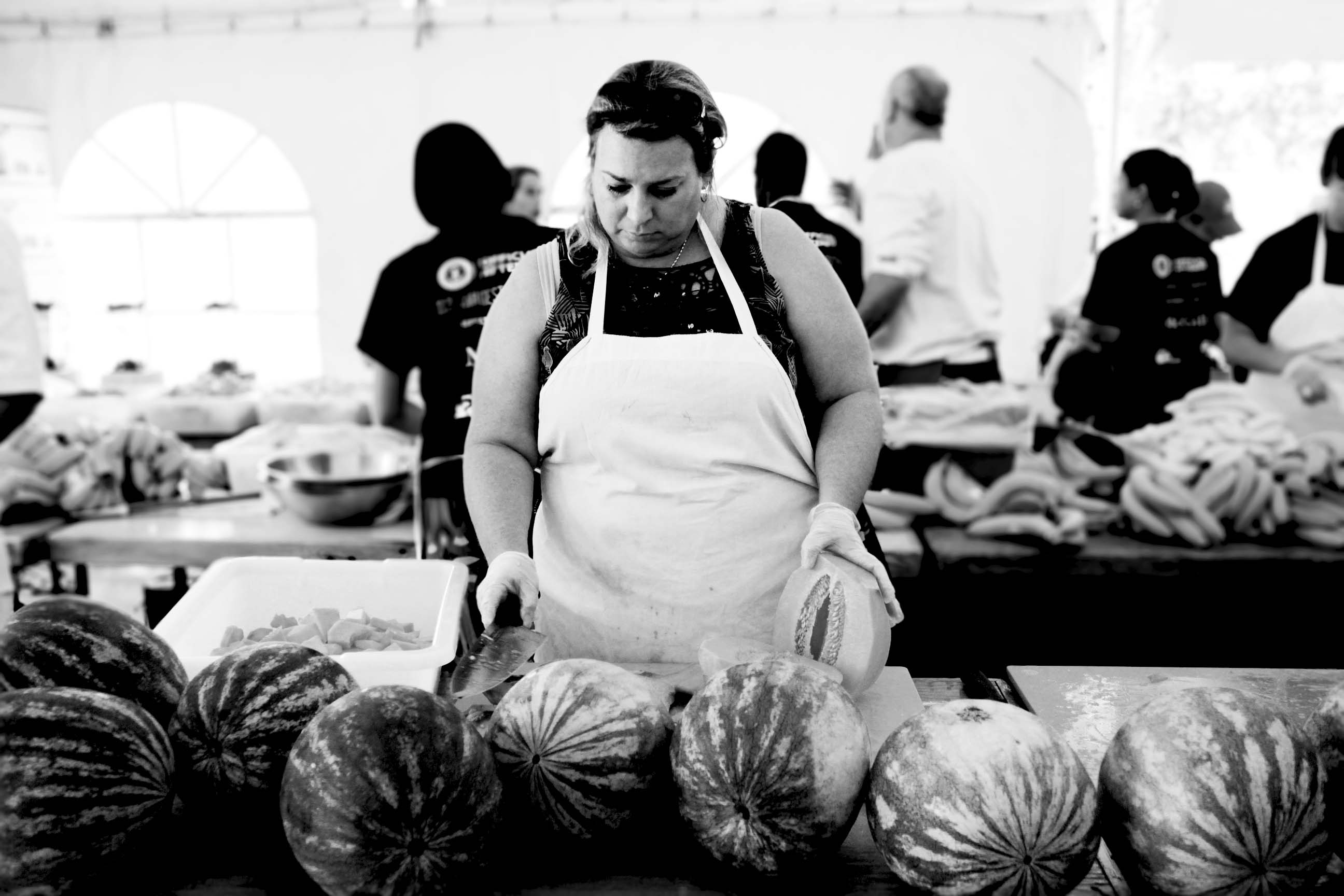On September 1, McGill once again set out to make it into the Guinness Book of World Records. Similar to McGill’s previous attempts over the past three years, which included the world’s largest fruit salad in 2012, McGill concocted the world’s largest smoothie using thousands of kilograms of cantaloupes and watermelons from the Macdonald Farm, berries grown in Quebec, and fairtrade bananas.
As per Oliver de Volpi, Food and Dining Services Executive Chef, the goal was originally to create a 3,800 litre smoothie. Although the end product only measured in at 3,121.7 litres, the university’s concotion beat the record set by its predecessor (in Sydney, Australia) by over 800 litres.
Starting at approximately noon, thousands of fruits, and litres of yogurt and juice were blended together at Lower Field. One hundred volunteers worked together to chop and blend all the fruits in order to meet the Guinness rule that requires the smoothie be free of chunks.
Not everyone was happy about the mammoth beverage, however. Paniz Khosroshahy, a U2 student in Women’s Studies and Computer Science who passed by the event, commented on a pitcher of wasted smoothie left on the field. “We started drinking from the pitcher and a staff person came over and told us that we shouldn’t drink it because it has milk and it’s been sitting there all day in that container and [it has] gone bad,” she told The Daily in an email.
Senior Director of Student Housing and Hospitality Services Matthieu Laperle. “One of the white plastic containers we used to hold the smoothie before it was poured into the big tank was inadvertently left on the field, and there were about 100 portions or so left in the vat at the end.”
Nevertheless, Laperle was content with the record-breaking event. “Every year, we try to do a special activity on campus to welcome all the students. At the same time, we try to promote what we do [which is] the food offering on campus,” he said.

According to an email from Laperle, 2,100 litres of the smoothie were served to the crowd that flocked to the field, over 600 litres were donated to the Old Brewery Mission, and more than 150 litres were allocated to the Royal Victoria College (RVC) Dining Hall.
Khosroshahy said, “It’s frustrating to see that in the face of all these budget cuts, we have the budget to make [3,121.7] litres of smoothie. It’s irrelevant that these fruits came from Mac campus. What’s important is that the resources for this smoothie could have gone into supporting more crucial services on our campus.”
Jamie Snytte, a U2 Cognitive Science student told The Daily, “The smoothie is kind of just for show.”
“This incident was a clear waste of my tuition money as a student and I’m very frustrated.”
“This incident was a clear waste of my tuition money as a student and I’m very frustrated,” Khosroshahy said.
Aside from the costs of the ingredients that went into the world’s largest smoothie, the venture incurred additional costs. Laperle confirmed in an email to The Daily that “there were costs associated with having the Guinness representative here to monitor the preparation of the smoothie and declare it to be the world’s largest.” He added, “These costs were anticipated and factored into the cost of the event.”
The bounty of fruit came at a high cost to the university. According to de Volpi, the fruit alone cost approximately $10,000.
Laperle also commented that the venture did not represent a significant cost to the university, as both the yogurt and juice used were donated. In addition, Laperle and de Volpi noted that the tent, in which the record was broken, did not cost the university anything. “There [are] some costs [that are not] paid by us. We have been able to work with alumni [on], for example, the tent. We did not pay for the tent, but we have to pay [for] security,” stated Laperle.

